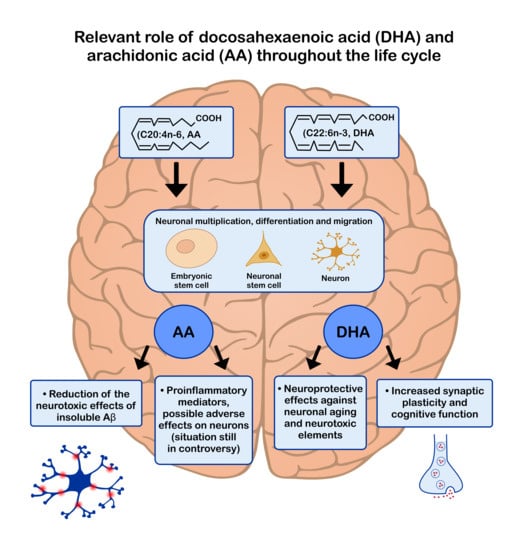Docosahexaenoic and Arachidonic Acids as Neuroprotective Nutrients throughout the Life Cycle
Abstract
Share and Cite
Sambra, V.; Echeverria, F.; Valenzuela, A.; Chouinard-Watkins, R.; Valenzuela, R. Docosahexaenoic and Arachidonic Acids as Neuroprotective Nutrients throughout the Life Cycle. Nutrients 2021, 13, 986. https://doi.org/10.3390/nu13030986
Sambra V, Echeverria F, Valenzuela A, Chouinard-Watkins R, Valenzuela R. Docosahexaenoic and Arachidonic Acids as Neuroprotective Nutrients throughout the Life Cycle. Nutrients. 2021; 13(3):986. https://doi.org/10.3390/nu13030986
Chicago/Turabian StyleSambra, Verónica, Francisca Echeverria, Alfonso Valenzuela, Raphaël Chouinard-Watkins, and Rodrigo Valenzuela. 2021. "Docosahexaenoic and Arachidonic Acids as Neuroprotective Nutrients throughout the Life Cycle" Nutrients 13, no. 3: 986. https://doi.org/10.3390/nu13030986
APA StyleSambra, V., Echeverria, F., Valenzuela, A., Chouinard-Watkins, R., & Valenzuela, R. (2021). Docosahexaenoic and Arachidonic Acids as Neuroprotective Nutrients throughout the Life Cycle. Nutrients, 13(3), 986. https://doi.org/10.3390/nu13030986








